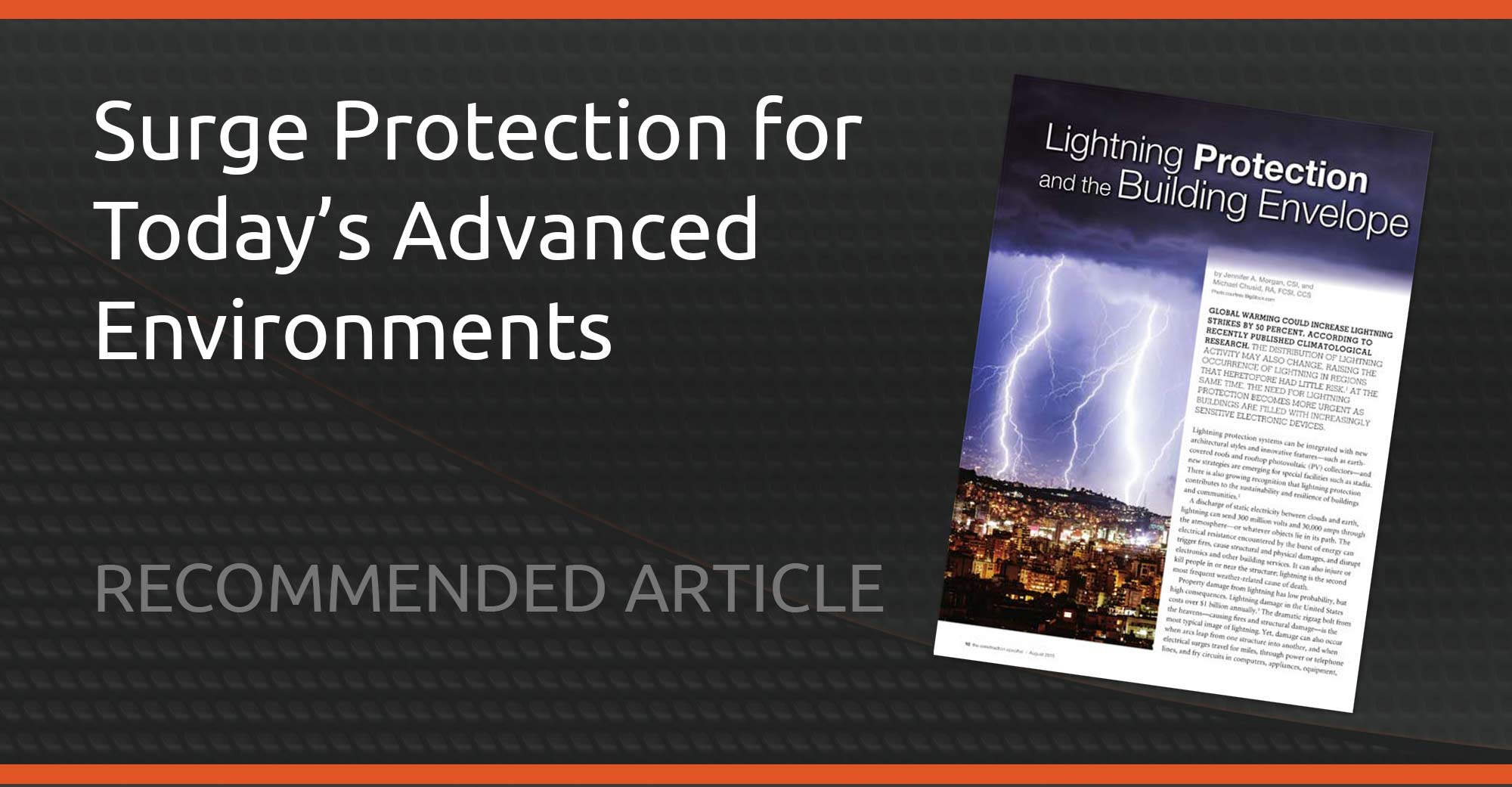With spring just around the corner many of us will be faced with thunderstorms that threaten the electrical systems, devices, and equipment of the facilities for which we are responsible. Although there are many types of transients, lightning is the granddaddy of them all and causes everything from catastrophic failure after just one strike to damage that goes unnoticed even after several strikes. Often, the loss of the device or system is not the biggest worry. Much worse, the danger to personnel and the economic impact to the facility can be immeasurable.
Most facilities have already implemented good ground networks, down conductors, and lightning cages to help mitigate the risk – right? Well, even in facilities where all these types of risk mitigating practices have been implemented, there is still a significant benefit to implementing surge protection.
Why use surge protection if the facility has already taken safety precautions?
For starters, facility equipment (i.e. LED lighting fixtures, security cameras, and remote devices) is including more and more electronic circuitry which makes them increasingly susceptible to even diminished transients. In addition to the voltage spikes that make their way through, there are even more significant threats posed by the potential difference between two ground points.
Facilities with very robust grounding grids shouldn’t have any issues, should they?
It has actually been found that at the grounding grids is where most of the failures are occurring. Even though there may be a great grounding grid in place; when lightning strikes the earth nearby, the grid can easily see potential difference from one point to another of several hundred volts. Even though this potential difference is present only momentarily it is always enough to minimally degrade the performance of the electronics by wearing at the PN junctions.
How do grounding grid failures happen?
In most cases where premature failure is found, the facility already went through painstaking measures to mitigate the risk with good lightning protection infrastructure. Where the failures are most commonly found in these cases is where there is a decent amount of distance between two points on the grid and two devices or systems have a cable for communication or data connecting them. The data line then tries to equalize the potential difference between the two points on the grid and in turn the communication interface or electronics are damaged.
Failures at the backup generator
Another common application where failures are prevalent is backup generator transfer switches. It has been seen where transients coming in from utility power have wiped out the electronics in the transfer switch rendering the generator useless at the very moment it is needed most. Many facilities have experienced this failure after investing thousand into their backup generator only to realize afterward it could have been avoided for a fraction of either the generator or the downtime costs by using a surge protection device.
Contact Chirico Scientific to learn how to determine
- How much surge protection is enough for your facility
- Why all surge protection devices are not equal
- How to insure the investment of a backup generator won’t be nullified by a transient
Download a printable version of this article.






Leave A Comment